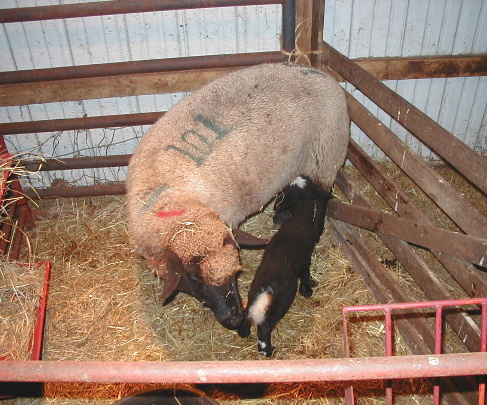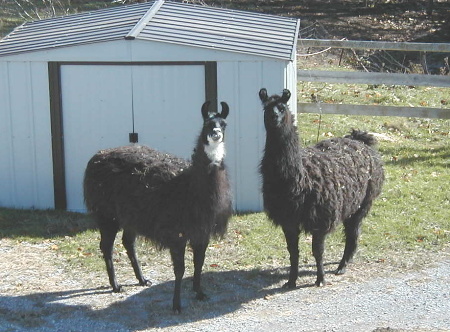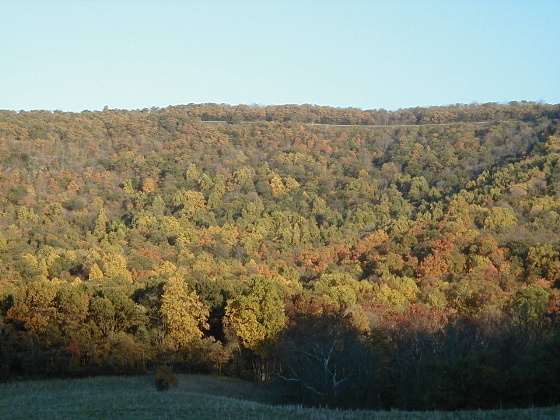
Here is the first lamb of the season, doing her best to have a meal in spite of the silly man with the camera.
Notes from a Hillside Farm; being Musings and Observations on Life, Letters, and our Most Holy Faith, by a Lawyer, Sheep- farmer, and Communicant of the Orthodox Church



 In an entry on the LiveJournal for Orthodox Christianity, Bishop Seraphim Sigrist asks about what icon touches you. By way of an answer to that question I present the clumsily photographed image on the left, an icon made by a friend of a friend. Before becoming Orthodox, I met a Russian couple, Mark and Lena Khaisman, then living in Front Royal. Mark was working as a stained glass designer for a local studio, but had trained in Russia as an iconographer. I had seen icons before, under glass from a distance at museums, or as prints in books. When I saw his works for the first time, held them, really looked at them, there was a quality I had never before imagined. It is a cliche these days to call icons "windows to heaven." I did not see heaven, but when I looked through these "windows", there were depths that looked back, judging, and comforting. It was the kind of encounter with the Spirit I thought possible only in prayer and reading the Scriptures. This was unexpected to say the least. In my mind icons were simply another form of religious art, instructive when used properly, idolatrous when abused, but totally understandable within my Anglican/evangelical world view. Standing before Mark's icons I felt like a wading pool swimmer shown the ocean for the first time. To my regret, I never purchased one of his before he and Lena left Front Royal for Philadelphia. My wife Susan did buy me as an unexpected present the icon displayed here. It had been carved by a friend of Mark's back in Moscow, blessed, and sent to America in hopes that it would send back some hard currency to help his family survive in the worst days following the Soviet collapse. I had admired it at Mark and Lena's home, and it took my breath away again when I unwrapped it in mine. It would be overstating the case to say that I became Orthodox to make a proper place for this icon in my life, but it would not be a lie either. For the curious, the icon is a bas-relief, carved in wood and lightly lacquered, of the "Vladimir Mother of God." The Orthodox Church in America web pages have a history of the place of the "Vladimir" icon in Russian piety here.
In an entry on the LiveJournal for Orthodox Christianity, Bishop Seraphim Sigrist asks about what icon touches you. By way of an answer to that question I present the clumsily photographed image on the left, an icon made by a friend of a friend. Before becoming Orthodox, I met a Russian couple, Mark and Lena Khaisman, then living in Front Royal. Mark was working as a stained glass designer for a local studio, but had trained in Russia as an iconographer. I had seen icons before, under glass from a distance at museums, or as prints in books. When I saw his works for the first time, held them, really looked at them, there was a quality I had never before imagined. It is a cliche these days to call icons "windows to heaven." I did not see heaven, but when I looked through these "windows", there were depths that looked back, judging, and comforting. It was the kind of encounter with the Spirit I thought possible only in prayer and reading the Scriptures. This was unexpected to say the least. In my mind icons were simply another form of religious art, instructive when used properly, idolatrous when abused, but totally understandable within my Anglican/evangelical world view. Standing before Mark's icons I felt like a wading pool swimmer shown the ocean for the first time. To my regret, I never purchased one of his before he and Lena left Front Royal for Philadelphia. My wife Susan did buy me as an unexpected present the icon displayed here. It had been carved by a friend of Mark's back in Moscow, blessed, and sent to America in hopes that it would send back some hard currency to help his family survive in the worst days following the Soviet collapse. I had admired it at Mark and Lena's home, and it took my breath away again when I unwrapped it in mine. It would be overstating the case to say that I became Orthodox to make a proper place for this icon in my life, but it would not be a lie either. For the curious, the icon is a bas-relief, carved in wood and lightly lacquered, of the "Vladimir Mother of God." The Orthodox Church in America web pages have a history of the place of the "Vladimir" icon in Russian piety here.